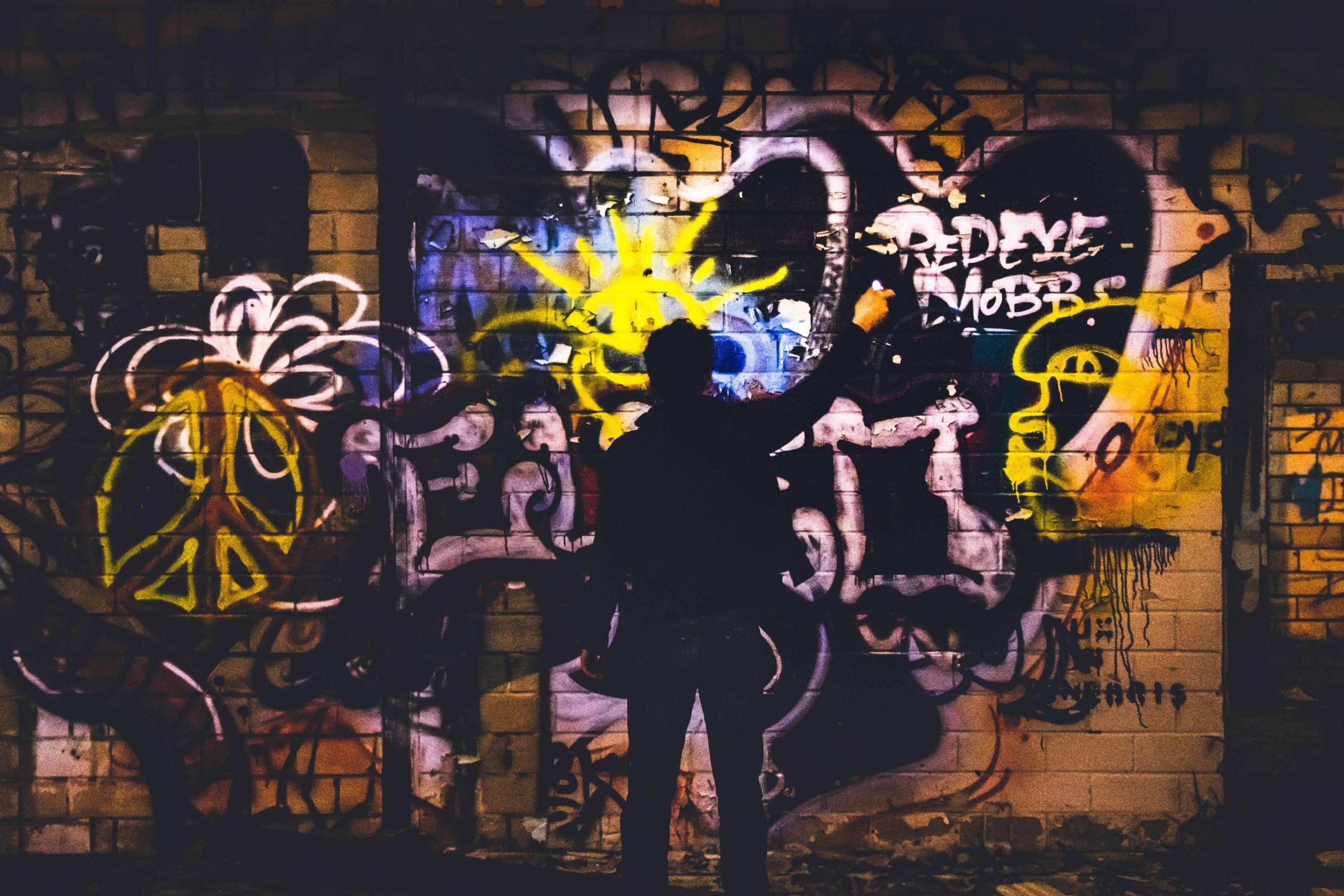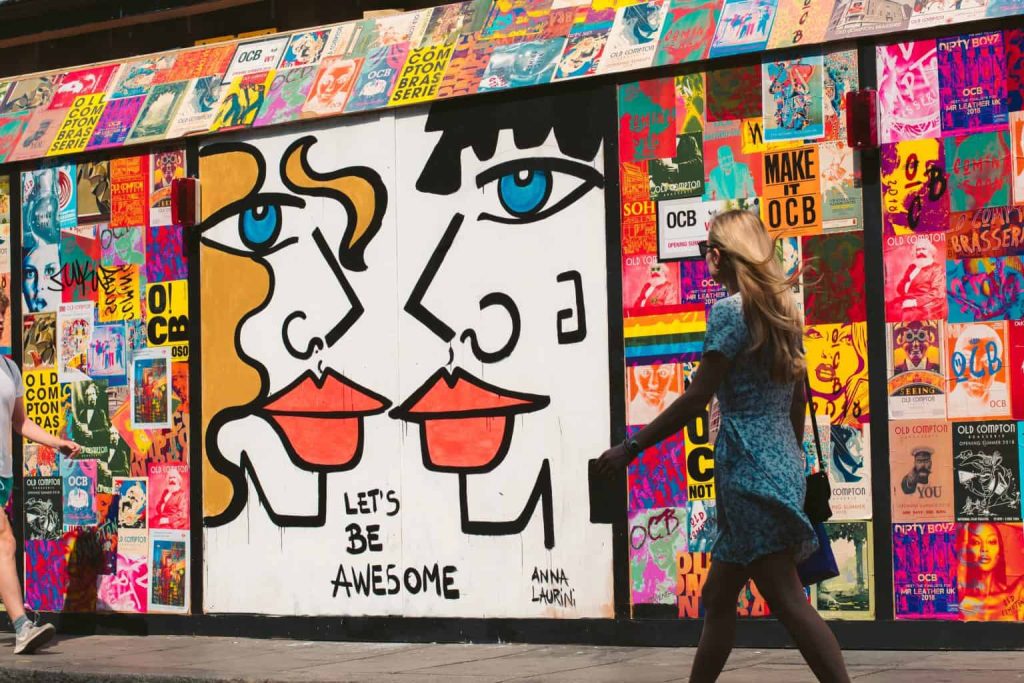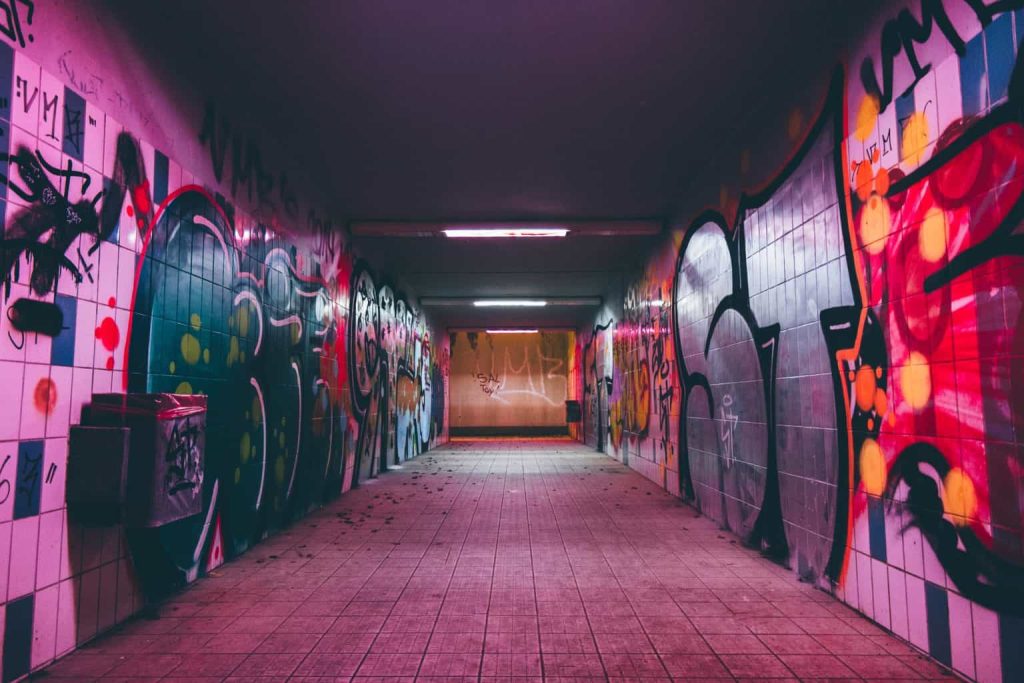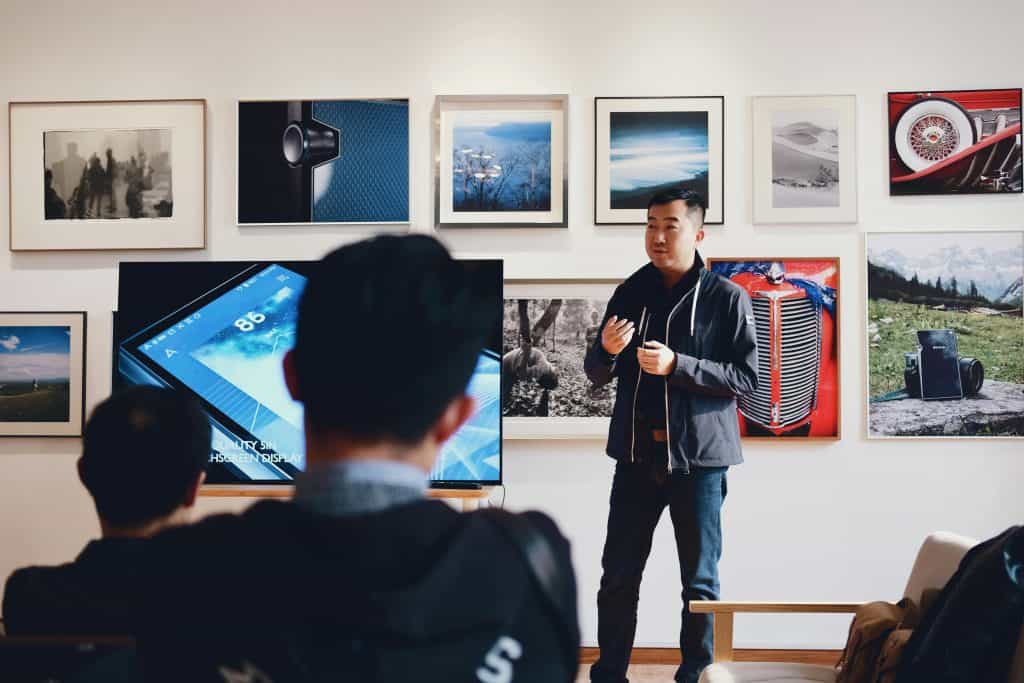
31 Jan Contemporary Global Art Movements
Artists today navigate a diverse landscape, drawing inspiration from a multitude of influences and engaging in a constant exchange of ideas that transcend conventional artistic movements. And the impact of contemporary art extends beyond gallery walls, permeating the digital realm and fostering a more inclusive creative environment. This era of global art connectivity has democratized artistic expression, redefining how we perceive and engage with art. As we navigate this ever-evolving landscape, it is crucial to explore the nuanced dialogues emerging from the intersection of tradition and innovation, regional identity, and global interconnectedness. This article unravels the threads that weave the complex mosaic of contemporary artistic expression, offering insight into the vibrant tapestry that shapes our present cultural landscape.
Major Contemporary Global Art Movements with International Collaboration

Photo by Mark Hayward
Hyperconnectivity and Digital Art
The advent of the internet has ushered in a new era of artistic expression, with hyperconnectivity and digital innovation at its core, allowing artists to transcend geographical boundaries and collaborate seamlessly. This has given rise to groundbreaking art movements challenging the limitations of traditional mediums. Notably, Net.art, Tactical Media, and Internet YBA (Young British Artists) exemplify the transformative impact of the digital revolution on the art world. Through online platforms, virtual communities, and digital archives, artists engage with a global audience, breaking away from the constraints of physical galleries. Visionaries like The Electronic Disturbance Theater, Jodi.org, and Beatriz Milhazes showcase the power of the digital realm to redefine artistic boundaries and connect with audiences on a global scale, emphasizing the profound influence of technology on contemporary artistic practices.
Activism and Social Engagement
In response to pressing global issues, contemporary artists are increasingly using their platforms for activism and social engagement, addressing topics such as climate change, human rights, and political unrest through collaborative projects. These endeavors have become prominent as artists use their creative expressions to spark important conversations, challenging societal norms, and inspiring change. Simultaneously, street artists like Banksy and Shepard Fairey play a pivotal role in transcending national borders through their work, pushing the boundaries of artistic expression by challenging societal norms and fostering dialogue. The fusion of art and social change is also exemplified in guerrilla gardening, where communities collaborate to transform urban spaces into vibrant, green environments, showcasing the power of artistic activism to reshape and rejuvenate shared spaces.
Cross-cultural Exchange and Identity
In the contemporary art landscape, national and regional boundaries are increasingly blurred as artists engage in collaborative projects that celebrate diversity and challenge preconceived notions of identity. This transformative process involves cross-cultural exchanges that highlight the richness of perspectives emerging from the merging of different artistic traditions. Notable examples, like the Asia Art Archive and Indigenous and Diaspora Artists Collectives, showcase the depth of cross-cultural collaborations. These projects go beyond conventional boundaries, redefining notions of identity in contemporary art by merging various artistic traditions and perspectives. In doing so, they create inclusive spaces for the voices of marginalized communities, fostering a more global and expansive artistic dialogue that embraces the diversity of human experiences.
Technological Innovation and Experimentation
Technological innovation and experimentation in the art world thrive on international collaboration, particularly within the realm of cutting-edge technologies. Teams from diverse corners of the globe converge to explore the intersection of art and technology, fostering a collaborative approach that pushes the boundaries of creative expression in unprecedented ways. Noteworthy entities such as TeamLab and BioArt Laboratories exemplify this convergence, showcasing the transformative power of international collaboration in the arts. These teams leverage virtual and augmented reality (VR/AR), artificial intelligence (AI), and bio-art to blur the traditional boundaries between the physical and digital realms. Through their collaborations, they create immersive and interactive experiences that provide audiences with a glimpse into the future of artistic expression and technological exploration, highlighting the evolving landscape where innovation and creativity intersect.
Impact and Challenges of International Collaborations

Photo by Hin Bong Yeung
Catalyst for Innovation and Shared Knowledge
International collaborations in contemporary art serve as a catalyst for innovation by bringing together artists, curators, and cultural influencers from different backgrounds. The exchange of ideas, techniques, and cultural perspectives leads to the creation of unique and groundbreaking artworks. Collaborations allow artists to explore new mediums, experiment with diverse artistic styles, and challenge conventional norms. This cross-pollination of creativity not only enriches the participating artists but also contributes to the global art scene by introducing fresh perspectives and pushing the boundaries of artistic expression.
Expanded Reach and Cultural Exchange
One of the significant benefits of international collaborations in art is the expanded reach and cultural exchange that ensues. Artists gain access to new audiences and markets, enabling them to showcase their work on an international stage. Cultural exchange facilitates a deeper understanding of diverse traditions, beliefs, and societal norms, fostering a sense of global unity and appreciation for cultural diversity. Through collaborative projects, artists can leverage their collective influence to address universal themes and global issues, transcending geographical boundaries and resonating with audiences worldwide.
Challenges of Communication Barriers, Power Dynamics, and Intellectual Property Rights
Despite the positive aspects, international collaborations in art face several challenges. Communication barriers, arising from linguistic differences or varying artistic practices, can hinder effective collaboration. Power dynamics within collaborations may lead to unequal participation and decision-making, impacting the authenticity and success of the project. Additionally, navigating intellectual property rights across different legal frameworks can be complex, potentially leading to disputes over ownership and usage rights. Striking a balance between preserving individual artistic identities and fostering collaborative efforts requires careful negotiation and understanding of the legal and cultural nuances involved in international partnerships.

Photo by 祝 鹤槐
Conclusion
Contemporary global art movements and international artist collaborations have ushered in a transformative era, breaking traditional boundaries and reflecting the interconnected nature of our world. From hyperconnectivity and digital art to activism, cross-cultural exchange, and technological innovation, these movements exemplify the power of collaboration in pushing the boundaries of artistic expression.
However, as artists and creators increasingly connect across borders, they face not only the benefits of shared knowledge and expanded reach but also challenges such as communication barriers, power dynamics, and intellectual property rights. Navigating these challenges will be crucial in ensuring that international collaborations continue to drive innovation and foster a more inclusive and interconnected global artistic community.
Key Takeaways
- Hyperconnectivity and Digital Art: The internet has revolutionized art by enabling global collaborations and pushing the boundaries of traditional mediums.
- Net.art and Tactical Media: Digital art movements like Net.art and Tactical Media engage global audiences through online platforms, showcasing the transformative power of the digital realm.
- Activism and Social Engagement: Contemporary artists use their platforms to address pressing global issues, sparking conversations on topics such as climate change, human rights, and political unrest.
- Street Art Movements and Guerrilla Gardening: Street artists like Banksy and Shepard Fairey challenge societal norms and foster dialogue across national borders. Guerrilla gardening combines art and activism to transform urban spaces.
- Cross-cultural Exchange and Identity: Collaborative projects celebrate diversity and challenge preconceived notions of identity by blurring national and regional boundaries.
- Technological Innovation and Experimentation: International collaboration in technology-driven art explores the intersection of art and cutting-edge technologies, blurring the lines between the physical and digital realms.
- Impact and Challenges: International collaborations offer benefits like shared knowledge and diverse perspectives but also face challenges such as communication barriers, power dynamics, and intellectual property rights.
- The Transformative Era: Contemporary global art movements reflect the interconnected nature of our world, breaking traditional boundaries and pushing artistic expression to new heights.
- Navigating Challenges: To ensure the continued success of international collaborations, artists must navigate challenges such as communication barriers, power dynamics, and intellectual property rights while fostering a more inclusive and interconnected global artistic community.
FAQs
How have digital platforms influenced the collaboration of contemporary artists?
Digital platforms have profoundly transformed the landscape of artistic collaboration, creating a globalized and interconnected environment for artists. These platforms serve as virtual hubs where artists from diverse corners of the world can easily come together, share their ideas, and engage in collaborative projects. Online platforms such as social media, collaborative software, and digital archives have become indispensable tools for contemporary artists seeking to break geographical boundaries. This shift has not only democratized access to collaboration but has also accelerated the pace of creative exchange, fostering a dynamic and vibrant global artistic community.
What challenges do artists face in cross-cultural collaborations?
Artists engaged in cross-cultural collaborations confront a range of challenges that stem from differences in language, cultural nuances, and artistic perspectives. Communication barriers can impede the smooth flow of ideas, leading to misunderstandings and misinterpretations. Additionally, power dynamics within the collaboration may arise, reflecting disparities in cultural influence or artistic hierarchies. Intellectual property rights become a complex issue, with differing legal frameworks and approaches in different cultures. Successfully navigating these challenges demands not only artistic skill but also a keen sensitivity to cultural diversity, open communication, and a commitment to mutual respect.
Can you provide examples of successful international collaborations in bio-art?
BioArt Laboratories, a collaborative initiative based in the Netherlands, brings together artists, scientists, and designers to explore the intersection of biology and art. Their projects often involve innovative uses of living organisms and biological processes to create thought-provoking artworks.Genetic Moo, another exemplary collaboration, involves artists from the UK creating immersive bio-art installations. Their work often explores the relationships between humans and microorganisms, incorporating living organisms into interactive art experiences. These international collaborations in bio-art showcase the potential for artistic expression to transcend geographical borders, bringing together diverse perspectives and expertise to create groundbreaking and thought-provoking works of art.
Study how “Art as a Tool for Social Change” can be a dynamic force in promoting societal development and consciousness by provoking thought, questioning conventions, and motivating action.

